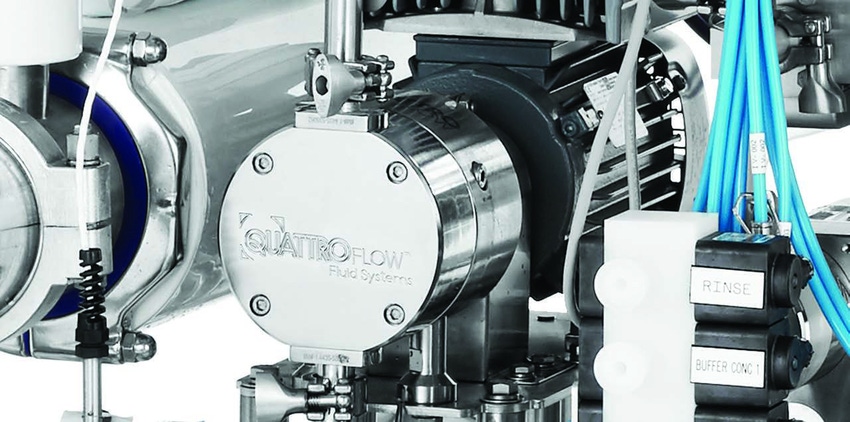Voices of Biotech
Podcast: MilliporeSigma says education vital to creating unbreakable chain for sustainability
MilliporeSigma discusses the importance of people, education, and the benefits of embracing discomfort to bolster sustainability efforts.
October 16, 2020

Sponsored by Quattroflow
Accurately and reliably producing pharmaceuticals and biotherapeutics is one of the most important – and challenging – tasks in the world of manufacturing. Any misstep in the production process will lead to the creation of a substandard end product that can do substantial harm to the user. That’s why the processes used in these production chains – things like inline buffer formulation (IBF) and virus filtration – must be completed with no deviation from accepted norms. For Asahi Kasei Bioprocess America, Inc., or AKBA, that means identifying and utilizing pumping technologies that can meet a wide range of demands. With that in mind, the company has found the perfect partner in Quattroflow and its complete portfolio of quaternary (four-piston) diaphragm pumps.
For decades, the pump technology of choice for these applications was the triple-head metering pump. Over time, though, the operation of these pumps was proving to be unable to reliably meet the demanding needs of IBF and virus filtration applications.
The main advantage of Quattroflow quaternary diaphragm pumps, which are available in eight models that cover flow-rate demands from R&D to commercial scale, is their unique form of operation. The pump’s four diaphragms are driven one after another by a connector plate, which moves back and forth out of its central position in a stroke that is generated by an eccentric shaft, with the length of the stroke determined by the angle of the eccentricity. In other words, the Quattroflow pumping motion has been modeled on the operation of the human heart, with its four pumping chambers and check valves keeping product flow constantly moving forward, as is the case in a heartbeat.
The Quattroflow’s pump chambers contain no rotating parts, meaning that there is low friction-generated heat input that can compromise the product. This mode of operation also means that the pumps can run dry, are self-priming, and produce little shear because of low product slip. In addition, they offer low-pulsation, leak-free operation while having great dry/ wet suction-lift capabilities. Across their full range, the eight Quattroflow pump models can provide flow rates from 0.001 L/min (0.0003 gpm) to 267 L/min (70.5 gpm) with some of the highest turndown ratios in the industry. Quattroflow pumps also possess the versatility to be driven by all types of motors, including servomotors. Combined with Quattroflow’s development and release of a compact version of its QF1200 pump (called the QF1200CV), Michael Brandt, AKBA’s Lead Innovation Engineer, had the perfect solution for lab applications that require the pumping system to fit in a smaller footprint, but still deliver flow rates from between 10 L/hr to 1,200 L/hr (2.64 gph to 317 gph).
How did a new pumping technology help a leading developer of systems for bioprocessing applications optimize the performance of their IBF and virus filtration systems? Find out now!
You May Also Like